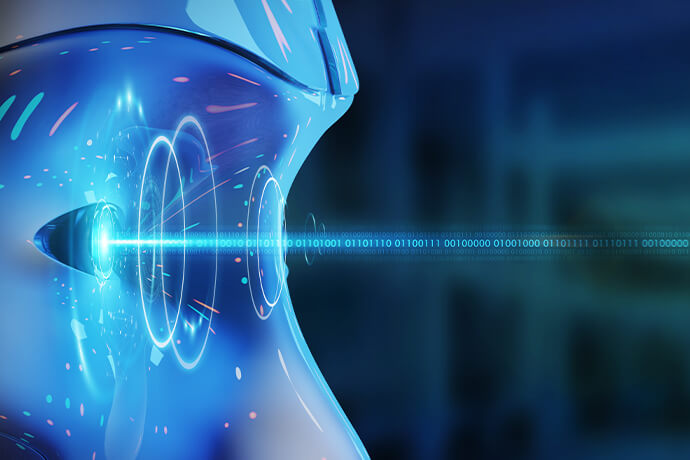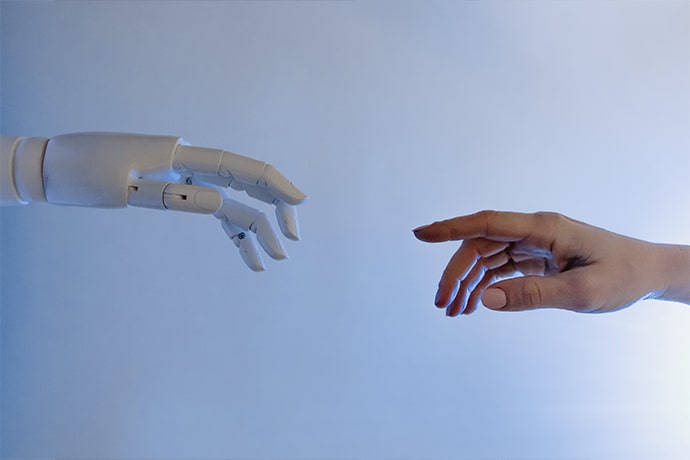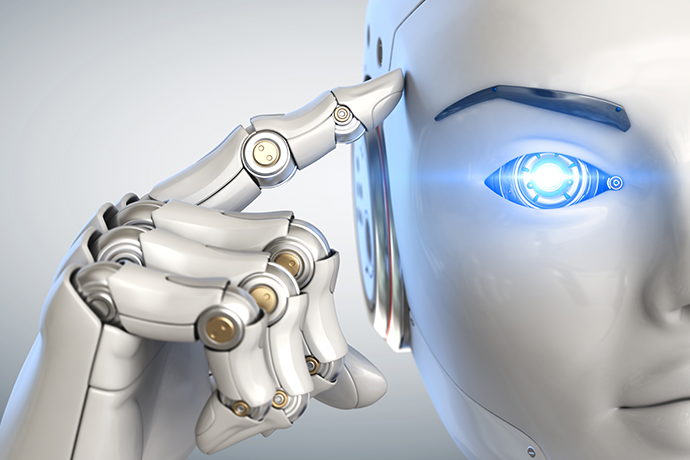 SPEAKERS
SPEAKERS
 TOPICS
TOPICS
Creating art with AI has become increasingly popular. In this guide, we’ll deep dive into AI generated digital artworks and how AI gets integrated into the creative process.

Artificial intelligence -ai-has become an increasingly important and influential feature of modern society. It has a huge range of applications, and its uses and capabilities are expanding all the time. AI artwork is one of the most fascinating developments.
Thanks to AI research, Artificial intelligence has created new opportunities for artists and art enthusiasts. Thanks to AI development, creatives can experiment with different ideas and expand boundaries.
In this article, we’ll explore the world of Artificial Intelligence generated artwork. Looking at various examples and opportunities digital tools present to artists & creators. We’ll also talk about what the future holds for those who enjoy using artificial intelligence art generators.
AI generated art is art that is produced by artificial intelligence. AI is an advanced area of computer science that creates systems that can replicate the way the human brain works.
Rather than natural, instinctive intelligence displayed by human beings, AI is intelligence put into practice by machines or technology. There are myriad use cases across multiple sectors, including healthcare, research, education and training, military and defence, business and finance. AI artworks are created by machines or generators in collaboration with AI artists.
The scope for digital art is expansive, as there are several variables to consider. One important factor is the level of control or autonomy of the digital artist.
Some artists are much more reliant on the machine and the algorithms it uses to produce art than others. AI art generators allow artists and creators freedom to produce art prints, wall art, home decor prints in different art styles.
“Portrait of Edmond Belamy” was the first AI generated work to be sold at auction. It was sold for $432,500 in 2018 (source).
The concept of AI generated art is underpinned by a desire to utilise AI as a creative weapon or tool. AI generated art affords new avenues for self expression.

Artificial intelligence art is created through machine learning. Artists produce pieces that don’t come solely from their ideas and creative output. They use artificial intelligence art generators to create artworks through algorithms.
AI artists write code and algorithms to enable machines to learn information, which they then use to generate new, unique images. During the first part of the process, the human being collects and shares data. During the second phase, the machine or generator produces the artwork.
Artificial intelligence art is all around us. AI tools are frequently employed to create engaging, unique advertisements to drive sales, aid marketing and brand awareness. Advertising teams could use AI to generate ideas and create new art simply by providing a brief for the machine.
An end user provides parameters such as objectives and the target audience information for the engine and trains the algorithms.
AI image generators respond with drawings, paintings or images. The more data you provide about your preferences and the aims of the campaign, the better the outcome. In a short period, you can scale the campaign to target huge audiences, combining human creativity with new capabilities.
We have outlined a few examples where AI is used as a tool for creativity.
Images and drawings are the most common example of AI artwork. There is an ever-growing range of AI art generators that produce images, based on descriptions and language prompts.
Dalle-E is one of the most well-known machine learning models. To create art with Dall-E, users provide a language description to generate images that align with the description. This could be anything from ‘bear working in a science laboratory’ to ‘a dog in space.’ The image that comes out will be realistic and accurate.
Other generators offer a different approach. Google DeepDream, for example, fills in blanks when it’s dark to create unique images. Other tools create a stylized version of an image. Such as turning a photo in a new image based on the style of Andy Warhol or Salvador Dali.
Music is another platform where AI can be seamlessly integrated into the creative process. Singer songwriters can now use AI tools and art generators to produce music and sound. This may involve new sounds or recreating the voices of well-known singers.
As AI has become more developed and sophisticated, its capabilities have broadened. AI can now be used to choreograph routines or scenes involving movement and dance.
AI tools can be utilised to help write screenplays, scenes for films, poetry, stories and public speeches.
NFTS, non-fungible tokens, are digital assets, which represent objects and items IRL. There has been an increase in the number of people trading NFTs in NFT marketplaces for profit. In most cases, NFTs are purchased using blockchain technology. Crypto currencies like Bitcoin and they are encoded on blockchains using the same technology.
NFTs have been around for almost a decade, but they have really gathered pace in the last five years. There has especially been a marked increase in NFT sales in May 2021, reaching over $170 million per week (source). Many NFTs are based on items or entities that already exist. One well high profile example is Charlie Bit My Finger, a digital asset that represents a well known YouTube clip.
One selling point of NFTs for creatives is offering a new platform to reach out to audiences and sell art. By creating NFTs, artists don’t have to rely on galleries or finding pitches to showcase their art. Artists can sell directly to buyers, adding new income streams and increasing the percentage of sales they keep.
AI art has influenced a diverse range of artistic pursuits and creations and it is now permeating the field of NFTs. There are copyright complexities to navigate, but human creators are producing AI NFTs and selling them with increasing frequency. AI offers a raft of benefits for businesses, organisations and individuals, especially those who work at scale.
As technology advances, there are also opportunities to go above and beyond what is currently accessible. There are already projects underway , which embed NFTs within AI. This provides an alternative way to use NFT via the Metaverse and increase the value of the asset.
There are several benefits of using an artificial intelligence art generator. These include:
Human creativity is not possible to imitate, but it can be limited or hampered. AI is by no means a substitute for human creativity. It aims to expand horizons and borders and push boundaries. It lifts limits and facilitates the development of new ideas.
The goal is to utilise collaboration to address pain points such as waning creativity or a lack of time.
One of the primary benefits of machine learning and automation is the ability to save time and eliminate repetitive tasks. AI art generators replicate ideas and images and they offer scalable, practical solutions while championing creativity.
It’s not always easy to translate what’s in your head into a realistic piece of art. Perhaps you are creative in terms of the ideas you generate but require extra tools to execute those ideas.
Using machine learning can allow you the tools to fully explore and express your creativity regardless of your technical talent.
The future of art is impossible to predict but there are strong indications that technology will play an increasingly influential role. Traditional forms of art, including painting and drawing, remain incredibly popular but there are new realms to discover and explore.
By combining human creativity with the efficiency and accuracy of machines, AI provides digital artists and organisations tools for expression. With the help of AI art generators, businesses can run creative campaigns more smoothly. They can raise awareness; connect with customers on social media & various digital platforms ultimately impacting their bottom line.

Artificial intelligence art has become increasingly popular. Using AI technologies offers advantages and opportunities for a wide range of people and organisations. Art generated by AI is a product of technology and algorithms as well as human creativity and perception.
Discovering AI art generators could change the way you create and perceive art and open doors. Whether art is your hobby or you’re looking for unique ways to market a business or engage with customers.